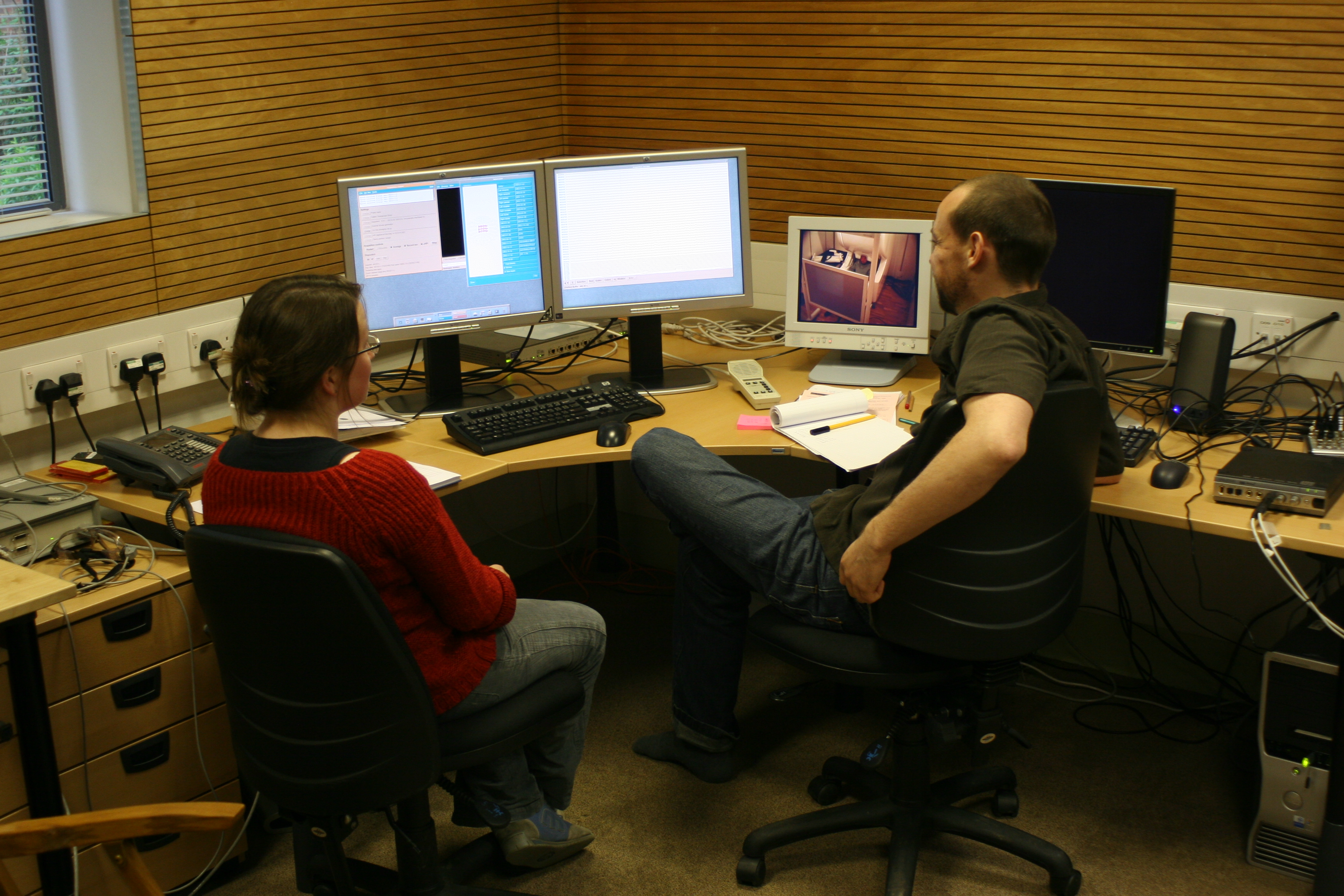
Technical details
General
Before you start your study
You have to become a "Qualified MEG Researcher", as outlined in our Meg researcher procedure and in the Standard Operating Procedures (SOPs) Please not that our MEG researcher training only provides the minimum of training required to enable you to run a study. Researchers without prior EEG or MEG experience may need more training in order to ensure good data quality in their own experiments. The planning, setting up and piloting of experiments is the responsibility of the researchers, and should be undertaken well in advance and in collaboration with PIs, group leaders or other collaborators as appropriate. Contact mri.admin@mrc-cbu.cam.ac.uk to start the process.
You have to create an acquisition set-up for your study, e.g. specifying whether you will record EEG, EOG, ECG, low-pass filters etc. You should contact Olaf Hauk well in advance in order to arrange a meeting in the MEG lab.
Every MEG recording needs to be operated by a "Qualified MEG Operator" (see SOPs). If you want to operate recordings yourself (in company of another qualified researcher), you need to undergo additional training as specified in the SOPs. This training has to be arranged on an individual basis, and we currently cannot guarantee a specific time frame.
Pilot your study: 1) Test your stimulus presentation software on the "CBU mimic" PC in the computer users room. This PC has the same settings as the stimulus presentation PCs in the MRI and MEG labs. 2) Run an "emtpy room recording" in the MEG lab to make sure your stimulus presentation works in the MEG lab, and your recording settings are correct (e.g. MEG, EEG, EOG/ECG channels, triggers; sound output is recorded in MISC0005). Contact mri.admin@mrc-cbu.cam.ac.uk or Olaf Hauk to arrange this. 3) Run a proper pilot (ideally with a participant you know), and run some basic analyses to make sure the data are what you expected.
Please check that any non-standard equipment is working and you have received the relevant instructions with the contacts in the next section (in particular the lab manager) before you run your first pilot scan. This is for example the case if you want to use eye-tracking, record additional signals via the Misc channels, or need special settings for the projector.
Important contacts
Enquiries about lab training (researchers and operators) and lab equipment should go to our lab manager Clare Cook. In case she is unavailable you can also contact Lucy MacGregor or Olaf Hauk.
For specific technical details (e.g. projector, auditory system) you can contact David Hayes from our technical team.
During Data Acquisition
While it is the responsibility of the qualified MEG operator to make sure the recording is running smoothly, the researcher should make sure all the settings for stimulus presentation and data acquisition are correct.
These are a few things to look out for at the beginning of each recording:
- Check if stimulus presentation equipment and response collection work as desired (are stimuli audible, visible etc.?)
- Has the correct preparation (incl. digitisation and subject ID) been loaded?
- Have the correct project and acquisition settings been loaded?
- Are triggers visible in STIM channel?
- Does the EEG look ok? Note bad channels.
- Are HEOG/VEOG/ECG in correct channels and look ok?
If you are using any non-standard equipment or make any changes in the settings (be they hardware or software), make sure to undo your changes in the end of your recording slot and leave the lab in the same state you found it before the recording.
For your general information, manuals for the data acquisition software are available to people with Cambridge approved logins at ElektaSoftwareManuals.

